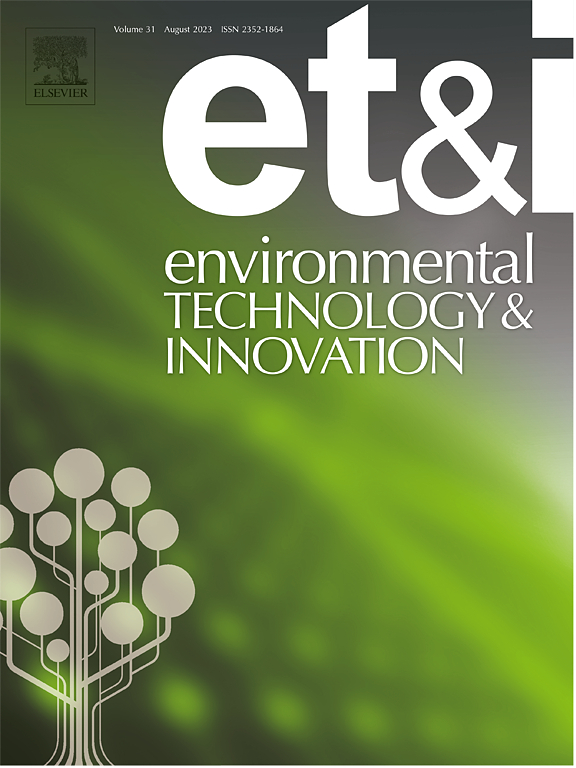An integrated three-crop rotation of oilseed rape−rice−rice enables the safe utilization and sustainable remediation of Cd-contaminated farmland
IF 6.7
2区 环境科学与生态学
Q1 BIOTECHNOLOGY & APPLIED MICROBIOLOGY
引用次数: 0
Abstract
A sustainable strategy for cadmium (Cd)-contaminated farmland was developed using a rape−rice−rice rotation system. This method combines early maturing and high Cd-accumulating rape variety with low Cd-accumulating rice varieties and alkaline Si-rich fertilizer. Field experiments compared different planting patterns: single-season rice (SR), oilseed rape−rice rotation (OR), rice-rice rotation (RR), modified oilseed rape-rice rotation (MOR), and integrated three-crop rotation (MORR). MORR significantly reduced Cd content in rice grains, boost total crop yield, and enhanced soil Cd removal. It achieved a comprehensive evaluation index of 0.99, safe crop production over three seasons, a soil Cd removal rate of 87.338 g/ha/yr, and economic benefits of 34,915 CNY·ha−1. Simulations based on the Cd input-output balance showed MORR cleaned soil Cd below standards in 12 years, outperforming the 15 years required by the Sedum alfredii and peanut rotation (SP). MORR minimized health risks from Cd exposure, balancing safe production, soil remediation, and farmer income, offering a viable solution for sustainable use of Cd-contaminated farmland.
油菜-水稻-水稻三种作物的综合轮作使镉污染农田的安全利用和可持续修复成为可能
采用油菜-水稻-水稻轮作制度,研究了镉污染农田的可持续治理策略。该方法将早熟高镉富集油菜品种与低镉富集水稻品种和碱性富硅肥相结合。田间试验比较了单季稻(SR)、油菜-水稻轮作(OR)、水稻-水稻轮作(RR)、改良油菜-水稻轮作(MOR)和三种作物轮作(MORR)的不同种植模式。MORR显著降低了水稻籽粒中Cd含量,提高了作物总产量,并促进了土壤Cd的去除。综合评价指标为0.99,三季安全作物产量,土壤Cd去除率87.338 g/ha/yr,经济效益34,915元·ha−1。基于Cd投入产出平衡的模拟结果表明,MORR在12年内清除土壤Cd低于标准,优于景天和花生轮作(SP)所需的15年。MORR最大限度地减少了镉暴露带来的健康风险,平衡了安全生产、土壤修复和农民收入,为可持续利用受Cd污染的农田提供了可行的解决方案。
本文章由计算机程序翻译,如有差异,请以英文原文为准。
求助全文
约1分钟内获得全文
求助全文
来源期刊

Environmental Technology & Innovation
Environmental Science-General Environmental Science
CiteScore
14.00
自引率
4.20%
发文量
435
审稿时长
74 days
期刊介绍:
Environmental Technology & Innovation adopts a challenge-oriented approach to solutions by integrating natural sciences to promote a sustainable future. The journal aims to foster the creation and development of innovative products, technologies, and ideas that enhance the environment, with impacts across soil, air, water, and food in rural and urban areas.
As a platform for disseminating scientific evidence for environmental protection and sustainable development, the journal emphasizes fundamental science, methodologies, tools, techniques, and policy considerations. It emphasizes the importance of science and technology in environmental benefits, including smarter, cleaner technologies for environmental protection, more efficient resource processing methods, and the evidence supporting their effectiveness.
 求助内容:
求助内容: 应助结果提醒方式:
应助结果提醒方式:


